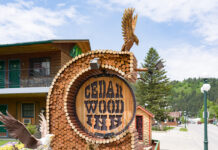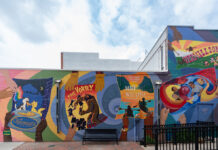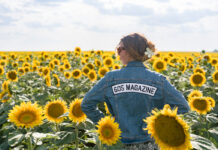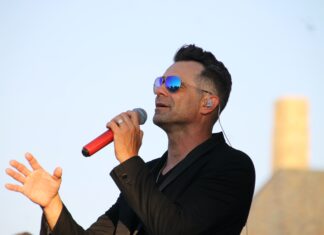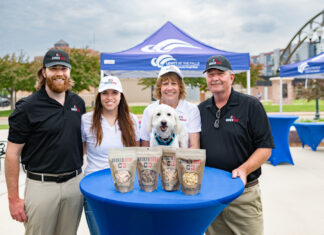There are few better feelings than taking some time to appreciate the great outdoors, and according to poet Kevin L. Cole, you needn’t travel too far away from home to get lost in nature.
605 talked to the Sioux Falls author about his new book, Late Summer Plums, and the importance of capturing moments simply by looking closely.

Why is poetry good for getting one outside and, better yet, into the natural world?
Kevin L. Cole: I have to be outdoors to write poetry. Even my poems set in the city are about the natural world. One’s backyard, a city park, the bike path – they all offer up a wealth of inspiration if you have your eyes open. I’ve written several poems about things I’ve seen on the bike path.
In what ways do you hope to inspire your readers?
KC: I find that many people in this region don’t understand why you’d write about [nature]: “What’s there to write about?” is a question I’ve heard countless times since I moved here almost 20 years ago.
There’s plenty, but you have to get out. You have to take long walks, look closely, be open to possibility, such as seeing a hawk clasping a snake, a rare warbler, or a doe fording a river.
What do you enjoy writing about nature-wise on this side of the state?
KC: When I think of East River, I think of the geography outside of the city. That said, most of my poems were inspired by stamps of geography no fewer than 15 miles outside of Sioux Falls – places where I hardly ever see anyone else.
Two sections of the book feature poems set in the city that are still natural-world poems. The natural world has a way of inserting itself no matter where you are.

On writing this book – why nature? Why now?
KC: Growing up in south Texas on the Gulf Coast, I spent much more time outside than inside: camping and fishing on the beach and back bays, summers in northern New Mexico, working on the family farm.
And, always, my father was teaching me how to observe the natural world, how to look closely, how to keep your eyes “peeled,” as he always said.
Late Summer Plums is available now at scurfpeapublishing.com.
HERON IN EARLY SPRING
Behind the great blue heron, a field of mallow
Shining in noon light brighter than bleached marrow.
In the shallow, swirling eddies she stands,
A gray sage untethered by the implacable pull of land.
To her the river is neither boundary nor quandary;
She contemplates no Heraclitean mystery.
Bullhead, emerald shiners, and yellow perch
Swim heedlessly under her still and steady watch.
They can’t see through the layer of catkins
Blanketing the black banks and the river’s cold skin;
They glide and balance themselves against the current,
Their lithe, muscled bodies in uniform suspension.
What are the heron’s silver feet to them
But some strange stylus scrawling cuneiform?




